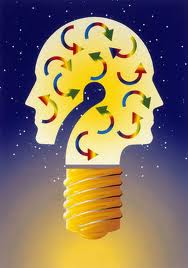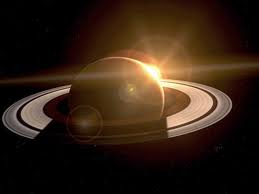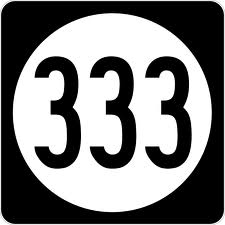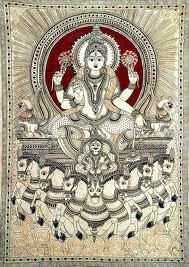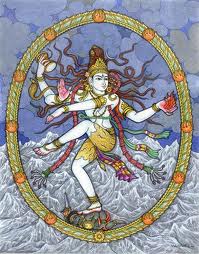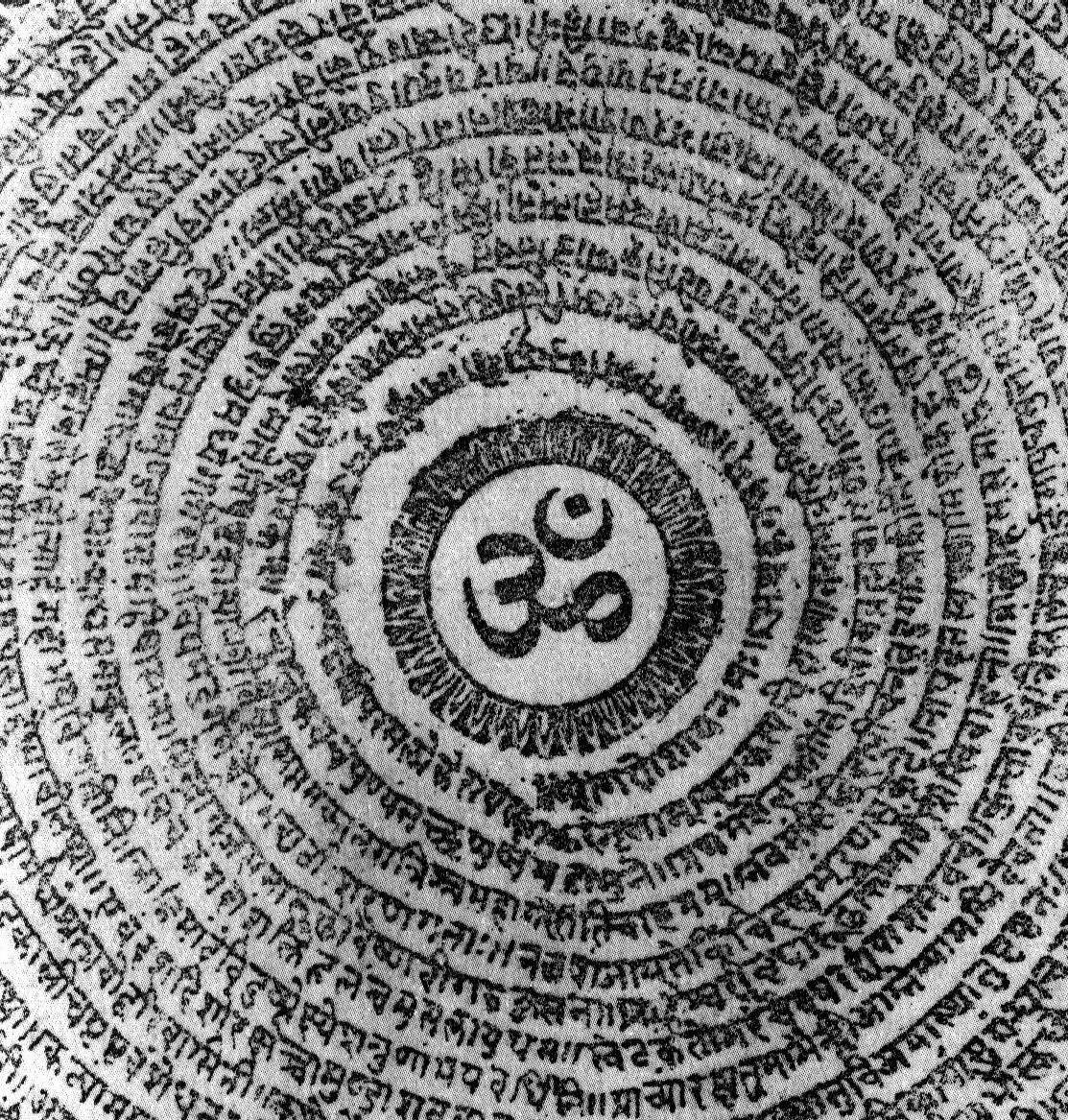How to Bend Destiny with the Navagraha Mantras – 9 – Saturn
This post continues the ongoing series on How to Bend Destiny.
Shani – Planet of Challenges and Character
Saturn is the most feared planet of all in the Eastern astrological construct. It is famed for causing long periods of difficulties where people are tested to the limit. Why? I believe it is because God is not interested in where you start or how but how you run the race. The evolution you undergo and the character you build in times of tragedy and difficulty is a key part of life and the true measure of a man or woman.
Saturn has the effect of detachment, spirituality, longevity, foreign travel and also of thieves and robbers. It is the overlord of all spiritual personalities and behaviour.
Effects of Saturn
Shani is the son of the Sun (Surya), mothered by Chaya. Shani is known to be lame (due t0 a prior quarrel with Yama, the God of Death and Afterlife) and the root cause of testing periods in one’s life.
Shani in a positive position within the horoscope gives the aspirant powerful leadership potential,honesty and sense of justice. It also causes spiritual detachment from materiality and wordily behaviours if the aspirant is so inclined.
Boost your spirituality and character!
The Vedic prayer to Saturn is below, followed by the Shani Gayatri.
Vedic prayer to Saturn
Transliteration
“Neelaamjana Samaabhaasam Raviputram Yamagrajam
Chchaaya maarthanda samboothm tham namaami Shanishwaram“
Meaning
“I bow down to Saturn, the one of a dark-blue complexion like ointment, the slow moving one, the son of Chaya and the brother of Yama.”
Shukra Gayatri
Transliteration
“Om Sanischaraya vidmahe
Suryaputraya dhimahi
tanno manda prachodayaat“
Meaning
“We know Shani,
We meditate on the son of the Sun,
May the slow one inspire us”
Mantras to Hanuman
The Ruling Deity of Shani is Lord Hanuman. We have already covered a number of Hanuman chants, including: the Hanuman Gayatri and the Hanuman Chalisa.
Coming soon: Part 10 – Rahu
Follow me on Twitter: @MantraYogi
Prior parts of the series
Click here for part 1 – Introduction
Click here for part 2 List of Mantras to Planets
Click here for part 3 The Sun + Shiva
Click here for part 4 The Moon + Parvati
Click here for part 5 Mars + Skanda/Hanuman
Click here for part 6 Mercury + Vishnu
Click here for part 7 Jupiter + Dakshinamurthy
Click here for part 8 Venus + Lakshmi
Thoughts on Mantra: 333 is the New 1000
Time is the most precious commodity
It is virtually indisputable that of the rare commodities a person could waste, time is the most precious. A sadhak living the lifestyle of a busy student or corporate persona must indeed carefully ration their time.
In this regard, I would like to present a modest help for those practising mantra yogis who find it difficult to incorporate a fixed time for japa in an unpredictable routine.
The ‘Easy’ Thousand
There is a short cut which is prescribed in scripture – if one cannot complete a full 1000 recitations of any mantra during an ongoing daily routine, then one is permitted to chant exactly 333 as an equivalent. This is known as the Easy Thousand.
Why does this work? First, like a teacher excusing a student from a rare indiscretion, know that for Vedic mantras and practices, the Devas are all-knowing and merciful in excusing the dedicated aspirant from exceptional circumstances. Secondly, it is noteworthy that 333 sums to 9 – a symbolic figure for infinity (read the prior post on Why 108? for more information). Therefore, it may be considered a sanctified count. In practical terms, it is a shade below half-way; thus freeing up more than enough time from meditation practices for the sadhak to complete whatever extraordinary duty they may have to.
When, where and how
Remember: this technique should be used on that rare occasion when one interrupts their usual nityakarmas due to some one-off time management difficulty. Straight after japa one should mentally prostrate themselves before the deity of the mantra and apologise for taking such a shortcut.
On the other hand, for a beginner of mantra japa moving to an intermediate level and looking to increase their count beyond 108x to a new plateau, chanting 333x daily is an easy stepping stone to 1000x later on.
How to Bend Destiny with the Navagraha Mantras – 8 – Venus
This post continues the ongoing series on How to Bend Destiny.
Shukra – Planet of Love, Wealth and Fame
Venus is a planet centered on materiality: love, wealth and fame fall under his remit. Needless to say, the deity features as a prominent God of physical wealth and comforts within the Hindu Pantheon,along with Lakshmi and Kubera.
Effects of Venus
In Eastern astrology, Venus is known as Shukra or Shukracharya. Whilst Brihaspati is the Guru of all the Devas, Shukracharya is the Guru of all the Rakshasas. Shukra was the son of Bhrigu. Interestingly, it was he that was first to receive the Maha Mrityunjaya mantra from Lord Shiva and perfected its siddhi – to raise the very dead back to life! It is said that to receive it his tapas was extreme: he hung upside down from a tree above a fire while meditating on Shiva.
Venus governs one’s interaction with the sensual and material. Those with strong artist talents, high levels of wealth,beauty and fame are all heavily influenced by the positive qualities of Venus. On an inter-personal level, Venus influences one’s marriage and relationship with lovers.
Boost your material wealth!
The Vedic prayer to Venus is below, followed by the Shukra Gayatri.
Vedic prayer to Venus
Transliteration
“Himakundha Mrinaalabham Daithyaanam Paramam gurum
Sarvashaastra pravatkaaram Bhaargavam pranamaamyaham”
Meaning
“I bow to the descendant of Bhrigu, whose appears white like an icy pond. He is the spiritual master of the rakshasas, and teacher of the scriptures.”
Shukra Gayatri
Transliteration
“Om aswadhwajaaya vidmahe
dhanur hastaaya dhimahi
tanno Shukra prachodayaat“
Meaning
“We know the horse-flagged one,
We meditate on the one who carries a bow,
May Venus inspire us”
Mantras to Lakshmi
The Ruling Deity of Venus is Lakshmi, Goddess of Wealth, Fame and Beauty. We have already covered a number of Lakshmi chants, including: Shreem, Kanagadhara Stotra and the Lakshmi Gayatri mantra.
Coming soon: Part 9 – Saturn
Follow me on Twitter: @MantraYogi
Prior parts of the series
Click here for part 1 – Introduction
Click here for part 2 List of Mantras to Planets
Click here for part 3 The Sun + Shiva
Click here for part 4 The Moon + Parvati
Click here for part 5 Mars + Skanda/Hanuman
Click here for part 6 Mercury + Vishnu
Click here for part 7 Jupiter + Dakshinamurthy
The Ultimate Game-changer! Part 4: Method of Chanting Aditya Hridayam
Secrets of Aditya Hridayam: Part 4
This is the fourth and final part of a series on the powerful stotra: the Aditya Hridayam.
Click here to read the first part.
Click here to read the second part.
Click here to read the third part.
Quick recap
In the prior parts of this series, we explored the background and the introduction to the Aditya Hridayam by Agastya, and the benefits of recitation.
The method to chanting the Aditya Hridayam
Given the practical benefits and the philosophical undertones to the Aditya Hridayam, it is suitable for any dedicated aspirant to chant or hear the stotra daily.
It is auspicious to start chanting from a Sunday.
It is ideal to chant the stotra 3x in one sitting. Once a routine has been developed, one may chant the stotra once on Monday-Saturday, then three times on Sunday.
The reverence placed on the Sun by Agastya Rishi should not be taken lightly. Remember that one should be freshly showered wearing freshly washed clothes before one sits down to commence chanting. It is not be recited absent mindedly on the way to work if at all avoidable.
Use the full focus on your concentration to derive the greatest benefit. As you chant, you will notice your worries disappear, a great confidence will be instilled in your mind and you will gain the admiration and respect of others through decisive action throughout your life.
Text and audio
The text of the stotra is available in basic form here.
Click here to listen to the audio of the stotra.
Follow me on Twitter: @MantraYogi
The Ultimate Game-changer! Part 3: Benefits of Aditya Hridayam
Secrets of Aditya Hridayam: Part 3
This is the third part of a series on the powerful stotra: the Aditya Hridayam.
Click here to read the first part.
Click here to read the second part.
Quick recap
In the first and second parts of this series, we briefly explored the background and the introduction to the Aditya Hridayam by Agastya.
A stotra of incredible power
As outlined by Agastya Rishi himself in the prelude to the stotra, the Aditya Hridayam has immense power.
Just look at the results – Rama himself used it to not only repel Ravana’s attacks but finally and decisively win the battle over insumountable odds and against a semi-divine opponent (Ravana was partly Gandharva, Deva, Brahmin and Rakshasa).
The stotra not only cleared Rama’s mind of doubt but also drove him to action! This is the power of the stotra.
Listening to Agastya’s reverence for the Sun in his introduction helps us understand why – the Sun is adored as the Parambrahman itself.
Given these points – when the stotra has been tried and tested by Sri Ramachandra himself, what is not possible when one recites the Aditya Hridayam?
Benefits of the Aditya Hridayam
Having extolled the Sun as the very Supreme Being that all aspirants, Devas, Asuras and Rishis strive to know, Maharishi Agastya provides a long list of benefits:
- Destruction of your sins
- Victory in battle/destruction of enemies
- Alleviate worry, anciety and self-doubt
- Instils determination and confidence
- Long life
- Prosperity
The Sun is effectively the universal illuminator. When chanted, the Aditya Hridayam illuminates one’s soul (destroys sins), one’s mind (instils clarity of thought), one’s heart (determination and confidence), and one’s body (a long disease free life).
In the next part, the method behind the mantra will be discussed.
Coming soon: Part 4
Follow me on Twitter: @MantraYogi
The Ultimate Game-changer! Part 2: Secrets of Aditya Hridayam
Secrets of Aditya Hridayam: Part 2
This is the second part of a series on the powerful stotra: the Aditya Hridayam.
Click here to read the first part.
Quick recap
In the first part of this series, the circumstances under which the Aditya Hridayam was imparted to Rama were explored.
Rama was confused and depressed as nothing was going his way on the battle front. Ravana remained alive and elusive to his tactics and weapons.
In the midst of this, Maharishi Agastya appears and begins to initiate Rama into the Aditya Hridayam.
More than the Solar Orb
Agastya’s introduction to the AH is key to understanding the stotra’s main themes. He mentions that the Sun is:
- The Ruler of the worlds and Lord of the universe
- That which is revered by the Devas and Asuras alike
- The embodiment of all the Gods
- The nourisher and energiser
- The embodiment of Brahma, Vishnu, Shiva and other key deities
By the end of the description the Sun is effectively extolled as the Parambrahman; there is nothing that the Sun cannot or doesn’t do to regulate the universe.
The point that is conveyed is that when pray to the Sun with the AH, you are in fact praying to the greatest deity.
In the next part we will look at the benefits of chanting the Aditya Hridayam.
Coming soon: Part 3
Follow me on Twitter: @MantraYogi
The Ultimate Game-changer! Part 1
Secrets of Aditya Hridayam: Part 1
This is the first part of a series on the powerful stotra: the Aditya Hridayam.
You’re on your knees…
There are moments in everyone’s lives where disaster has struck you or your loved ones with such incredible force that nothing is right, your confidence is lost, the odds appear insurmountable and the battle unwinnable.
It is rare to find people who thrive under such conditions. For most of us, the pressure can cause enthusiasm to wane and all hope to fade.
…but all is not lost
One of the most famous incidents in our scripture is the final battle of the Ramayana. Rama had begun the battle with Ravana but after ceaseless combat was unable to even come close to killing him.
At this point, with his physical energy drained, Ramachandra’s thoughts began to wander and the spectre of doubt began to creep into his conscious mind. Doubt is the greatest enemy of any warrior without a second. Once you begin to second-guess your strategies and actions in combat, you are as good as dead.
The Devas noticed. Congregating in the sky above the battle ground they decided to dispatch Maharishi Agastya to his aid – one of the greatest, most pioneering and accomplished of the Saptarishis. The intervention of Agastya was the ‘Game-Changing’ event of the battle.
The light at the end of the tunnel
Rishi Agastya initiated Rama into the profound secrets of Sun worship: he taught Rama the Aditya Hridayam Stotra (the Heart of the Sun Hymn).
In the second part we will further explore the hymn’s secrets and benefits.
Coming soon: Part 2
Follow me on Twitter: @MantraYogi
What is Tratak Sadhana? Part 2: The Benefits
This post continues from the prior article on Tratak – click here to read.
The benefits are many
The point of tratak is to ultimately still the mind and use the resulting concentration to access soul power within.
Aside from improved focus, mental acuity and memory, other notable benefits are:
- Precognition. One may experience such heightened levels of perception that your observation skills border on precognition. IE – you can almost read someone’s thoughts or know what they are about to say before they say it. This occurs because the mind is usually attempting to process more information from your 5 senses continuously than is usually possible. Most of the time it must ‘delete’ the majority of this information flowing in and just focus on the relevant details. With the practice of tratak, one starts to delete less and absorb more.
- Influence. Your powers of influence improve as you can no only ‘read’ people better, your added awareness and mental acuity give rise to greater levels of confidence. In combination these two factors allow you to improve your oration abilities, stick to the strength of your convictions and therefore much more easily influence others.
- Siddhis. The advanced practitioner of tratak can reach the stage where their cognitive abilities can access the subtle realms of existence and channel divine power to manifest siddhis (when used in conjunction with mantras); the easiest being clairvoyance, remote vision, psychic communication, etc.
The Ultimate Invocation of Shiva – The Rudra
Worship Rudra, the God of the Storm
In the centre of the Krsna Yajur Veda, there is a hymn called the Rudra (also called the Rudram or Rudraprasna). It is a powerful invocation of Lord Shiva in the fierce form of Rudra. Rudra is the God of the Wind, Storm and the Hunt. He is accompanied by his fearsome entourage of the Maruts, the Gods of the Storm and Hunt and is known as the God of Thieves.
Translating from Sanskrit, Rudra means “the Howling One”, “the Terrible One”, “the Roaring One”, or “the Wild One”.
Tap into the essence of the Veda
Each verse is filled with incredible potency and extremely beneficial to the health and spiritual development of any sincere aspirant.
The Rudra is split into two parts – the Namaka and the Chamaka. The Namaka is so named because most lines end with ‘namo’ (prostrations) and similarly, the Chamaka’s verses each end in ‘chame’ (give me).
One of the reasons why the hymn is so powerful is because the Panchakshari mantra – Nama Shivaya – occurs in its very centre. The Panchakshari Mantra is the very essence of Shiva, constituting the power of the universe, the 5 elements, and directly stimulates chakras in the body of the sadhak.
Method of chanting
The Rudra can be chanted from start to finish for a one-off recitation, or can be structured in a specific way for multiple rounds.
The number eleven is auspicious to Shiva. To chant the Rudra 11x is called a Laghu Rudra, or an Ekadasa Rudra. The Namaka is chanted 11x, each time combined with a part of the Chamaka.
Taking this further, 11 Ekadasa Rudras constitute a Maharudra. 11 Maharudras constitute an Adi Rudra – the ultimate invocation of Shiva. The last time such a high profile event occured was in the presence of Sri Sathya Said Baba.
A yagnya usually accompanies the chanting, followed by abishek of panchamrita (the 5 components of the nectar of the Gods) – which is made up of five precious liquids, including water from a sacred river, milk, honey, ghee, yoghurt and the juice of a sugar-cane.
Chant the Rudra for Prosperity, Power and Peace
In general terms, aspirants pray to Shiva for the following benefits:
- Inviting auspiciousness into their lives
- Increased detachment and affinity for spirituality
- Incredible health and vitality; alleviating disease
- Greater efficiency and time management, overcoming procrastination
- Counteracting the malefic effects of the Sun, Jupiter, Saturn and Rahu
Needless to say, the worship of the Auspicious One also brings great peace to not only the aspirant and family, but extends as far as lokakshemam – ie peace for the entire plane. Click here for a prior article on peace.
His Holiness Sri Swami Sivananda Saraswathi shed further light on the Rudra, outlining the following specific (and more tangible) benefits in proportion to the number of Rudras performed:
1 Rudra – Freedom from Bala graha (diseases common to children).
3 Rudra – Freedom from imminent difficulties with which one is faced.
5 Rudra – Freedom from the evil effects of certain planets occupying unfavourable positions.
7 Rudra – Freedom from great fear.
9 Rudra – The fruit of one Vajapeya sacrifice (one of the great public yagnyas of ancient times).
11 Rudra – Getting the favour of kings and great wealth.
33 Rudra – Attainment of wishes for objects and having no enemies.
77 Rudra – Enjoyment of great happiness.
99 Rudra – Attainment of son, grandson, wealth, grain, Dharma, Artha, Kama and Moksha and freedom from death.
1 Maharudra – Attainment of the favour of kings and becoming the Lord of great wealth.
3 Maharudra – Fulfilment of impossible tasks.
5 Maharudra – Acquirement of vast lands.
7 Maharudra – Attainment of the seven worlds.
9 Maharudra – Freedom from births and deaths.
1 Atirudra – Becoming God.
Is there any superior sacrifice in modern times?
In the modern day, the Rudra is considered one of the greatest yagnyas (fire sacrifices) possible and on par with the Aswamedha yagnyas etc of ancient times.
Chant or listen to the Rudra daily (click here for a link to the audio); Mondays in particular are auspicious to Shiva.
Follow me on Twitter: @MantraYogi
